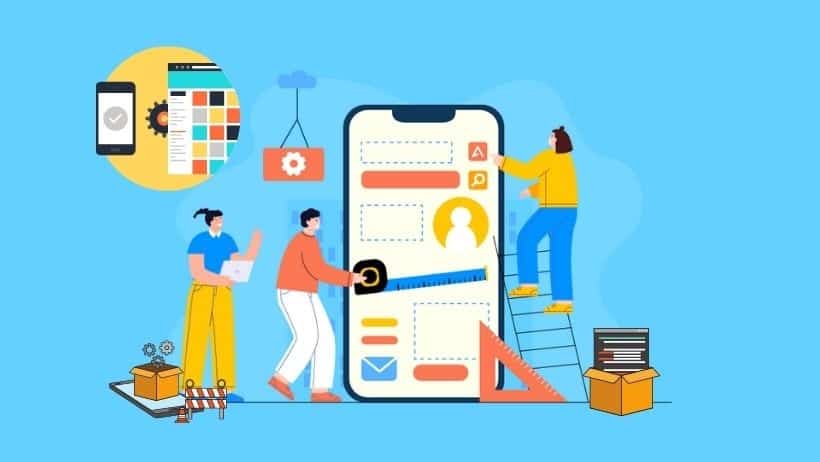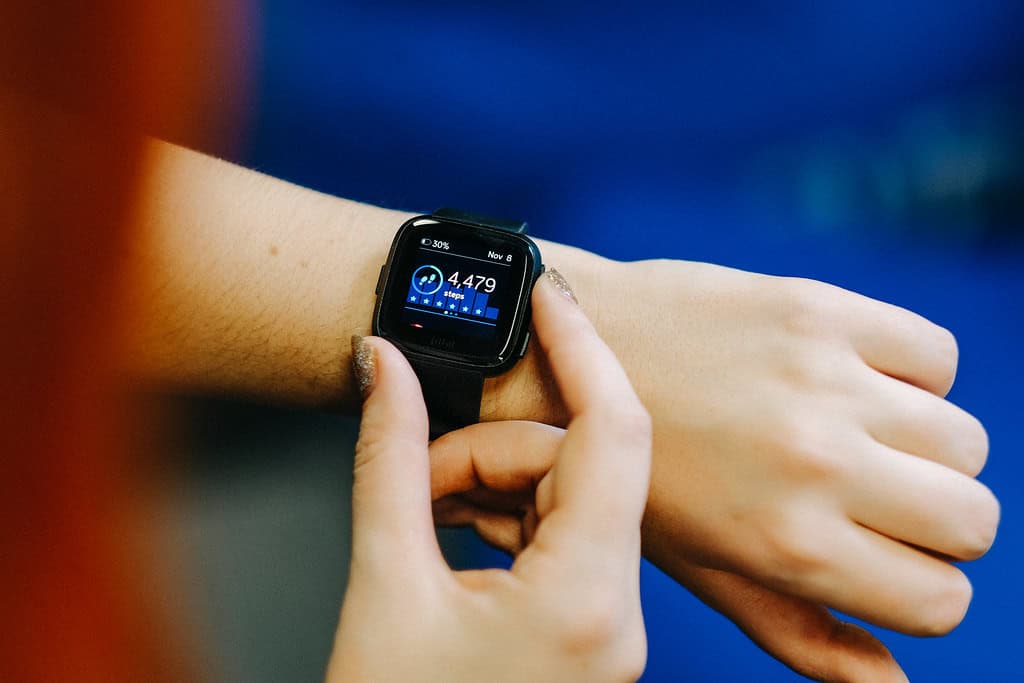Today, mobile apps are becoming more and more popular. They’re used by millions of people every day, but how will they change in 2023? That’s what we’re here to discuss today. We’ll be going over ten of the most important trends that will affect the future of mobile app development.
Mobile apps are going to become a part of our daily lives.
The number of mobile apps has grown every year and that number is expected to continue growing through 2023 as well. In fact, according to statistics from IDC, the world’s largest technology market research firm, there were more than 1 billion active users in 2018 alone—up from 500 million just four years earlier. And this doesn’t even include all the people who use their smartphones or tablets for other purposes (for example: playing games). As you can see by these numbers alone it’s clear that mobile devices are becoming an integral part of modern life—and they’re only getting bigger and better over time.
Top 10 Mobile App Development Trends in 2023
Agile Methodology
Agile methodology is an incremental model of app development. The project is developed and released in incremental stages or versions. It provides lots of opportunities to the developers to assess whether the app is moving in the right direction all throughout the development cycle.
The main idea behind agile methodologies is to deliver working products quickly by breaking down large projects into smaller chunks that can be completed in shorter periods of time. In an agile project team members are required to make decisions quickly so they can improve their progress towards completion.
Accelerated mobile pages
Accelerated mobile pages (AMP) are a new standard for making webpages load faster on phones. They’re a subset of HTML, so you’ll need to know how to code them if you want to use them on your own website.
Accelerated mobile pages use a stripped-down version of JavaScript, which makes them ideal for small sites or apps that don’t need more functionality than what AMP can provide. However, unlike with other technologies like Progressive Web Applications (PWA), there’s no standard way for developers to add support for accelerated mobile pages in their websites’ master files—so even though most browsers have adopted this technology by now and support it natively, many developers still don’t know what they are or how best use them when building websites or apps.
Artificial Intelligence
Artificial intelligence (AI) is the future of mobile apps. AI will be used to create new apps and improve existing ones, as well as make your user experience even better, personalize it based on their needs, and increase security by creating personalized security measures.
The use of AI in mobile apps is already becoming more common as developers try to find creative ways to incorporate the technology into their projects. For example:
- Personalization: The ability for an app to tailor its content based on how you use it or what type of device you’re using (mobile phone versus tablet). This can include things like showing different ads depending on which version of an app you’re using or making recommendations based off past purchases made through one platform instead another.
- Security: Protecting information from prying eyes by encrypting sensitive data before storing it locally or sending it over the internet; this means keeping private information safe while still allowing users access features like downloading music onto devices without sharing passwords
Progressive Web Apps (PWA)
PWA is a new technology that allows developers to create apps that behave like native apps. It’s not just a new technology, it’s also a new way of thinking about app development. In other words, it’s all about being more mobile-friendly than ever before.
Chatbots
Chatbots are computer programs that use natural language processing (NLP) to respond in ways similar to how humans would. They can be used for a variety of purposes, such as customer service and sales, but they’re especially popular with businesses because they can increase engagement and improve conversion rates by answering questions without having to call a human agent.
In fact, the number of companies using chatbots has increased dramatically over the past few years—and there’s no sign of slowing down. One estimate put it at 1 billion in 2018 alone; another predicted that number will reach 2 billion by 2021 (and maybe even 3 billion if you’re feeling optimistic). If this trend continues unabated—and I’m inclined to agree based on recent data points like Google AdWords’ announcement about its AI-powered “Chatbase” platform which enables businesses across industries including retail, healthcare, finance & insurance, etcetera.

Near field communication (NFC) – Beacons Technology
Near field communication (NFC) is a short-range wireless technology that enables the exchange of information between two devices in close proximity. NFC can be used for mobile payments, as well as data sharing among smart devices.
NFC is a subset of RFID technology, which uses radio signals to emit and receive signals from an RFID chip or tag when placed near another tag with similar characteristics. This allows consumers to use their smartphones near field sensors to make purchases using their wallets without having to take out cash or credit cards from their pockets; instead, they can simply tap on an object with their phone and pay using just one swipe.
Integration of Virtual Reality and Augmented Reality
Virtual reality (VR) is a digital environment that can be experienced with a headset, and augmented reality (AR) is a system that superimposes computer-generated images on top of the physical world. Both VR and AR have been used to create realistic experiences for users in video games, entertainment, education and training.
The market for mobile app development will continue to be driven by technology trends such as artificial intelligence (AI), machine learning algorithms, big data analytics and cloud computing. These technologies are being used within mobile apps to improve user experience while keeping costs low.
Internet of Things (IoT)
The internet of things (IoT) is a term that’s been around for decades, but it’s only recently become something we can actually see and hear about. The IoT refers to devices connected to the internet that collect data about their environment and send it back out into the world. Think of how many times you’ve plugged in your phone charger or plugged in a lamp; these are examples of connected devices in your home or office that are collecting information about themselves and sending it out into the cloud via Wi-Fi networks or cellular towers.
The most common use cases for IoT today are smart homes where appliances connect with each other via an app on a user’s phone (or tablet). For example: if you want bread at breakfast time but don’t feel like getting up from bed yet because there’s still some work left before noon arrives—you can tell your oven lightbulb by using Amazon Alexa through Echo speakers so she knows when lunchtime has arrived.
On-Demand Apps
On-demand apps are an interesting concept that can be used in a variety of situations. On-demand apps allow users to run applications without downloading them, thus saving space on their device and preventing additional data charges. This makes on-demand apps ideal for individuals who don’t want to pay for every app they use or have limited bandwidth available as they travel across different networks.
On-demand apps are also beneficial for businesses that want to distribute information quickly but don’t want it downloaded onto their computers or devices before being used by employees during work hours, such as salespeople in retail stores who need access only when needed (for example, when placing orders).

Wearable apps
We’re going to talk about wearable apps in this section of the article. Wearable devices are used to track your health, fitness and well-being from a user’s perspective. These devices include smartwatches, fitness trackers and activity trackers.
Wearables have become popular because they can help people stay active by providing them with real-time feedback on their performance during workouts or other activities. This can be especially useful for those who want an easy way for tracking their progress in losing weight or improving their overall health status.
By 2023, mobile apps will be more widespread than ever before
The fact is that mobile apps have come a long way since their inception. In 2019, there are over 2 billion active users globally and an estimated 2.6 billion smartphone users worldwide. As these numbers grow and more people adopt smartphones, it’s no surprise that mobile app development is becoming more popular than ever before.
According to research by Statista (2018), the number of smartphone owners has increased from 1 billion in 2010 to 2 billion in 2017—a growth rate of 50%. This means there will be even more people who want access to your app or website via their phones.
Bottom Line
Mobile apps are becoming more and more popular, and the trend is only going to continue in the next few years. There are so many new trends emerging from different parts of society that it’s hard to keep track of them all—but we’ve done our best. From artificial intelligence to chatbots and wearables, there is no doubt that mobile apps will play an essential role for businesses in 2023.
The post <strong>Mobile App Development Trends for 2023</strong> appeared first on Creativ Digital.
from Creativ Digital https://ift.tt/sFU3Byh
No comments:
Post a Comment